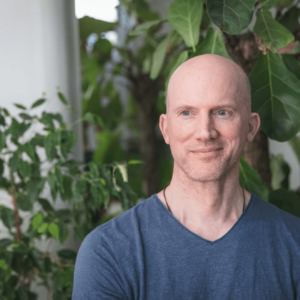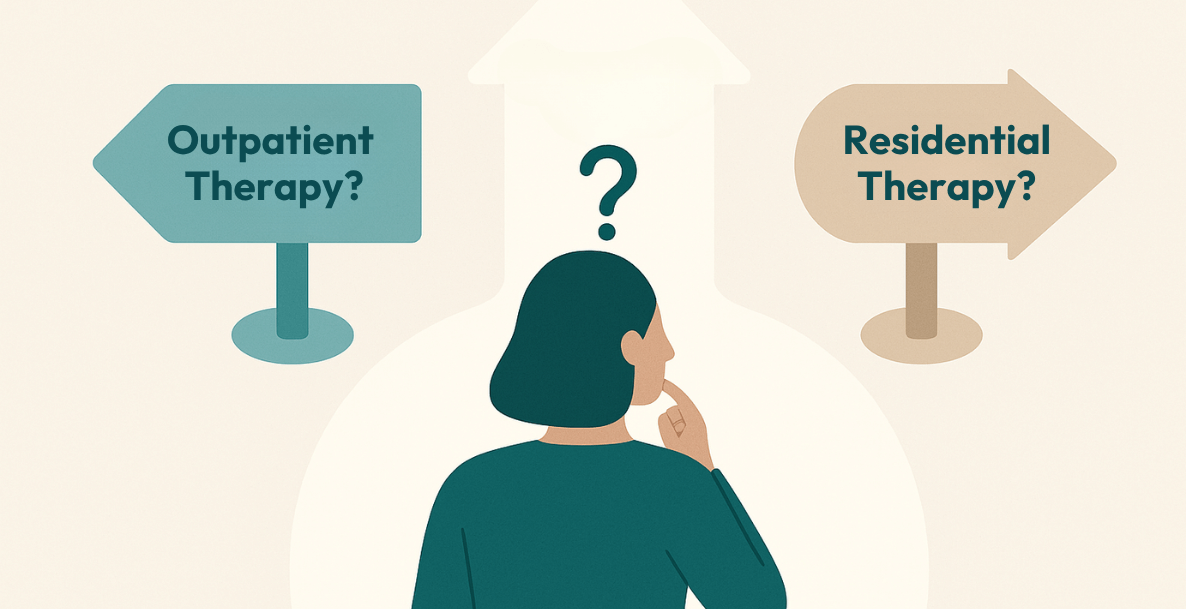Black-and-white thinking, also known as all-or-nothing thinking, is where things are seen in extremes: good or bad, success or failure, safe or unsafe. It’s a common mental shortcut, especially when we’re overwhelmed, anxious, or in pain. In the context of mental health, it can sound like: “I’m either broken or I’m fine.” “My parents were either wonderful or terrible.” This kind of thinking offers temporary certainty, but it often distorts the truth and limits healing.
The reality is, most of our experiences live in the grey. Healing begins when we can hold conflicting truths at once: I was hurt, and I still love them. I’m struggling, and I’m doing my best. Recovery isn’t about choosing sides—it’s about noticing the defences that make us split, and gently expanding our capacity to integrate complexity. In the grey, there’s room for growth, nuance, and ultimately, self-compassion.
Why We Think in Extremes – A Few Theories
We tend to think in extremes when our nervous system is primed for survival. Binary categories—safe/unsafe, good/bad, right/wrong—create a false but comforting clarity in the face of emotional chaos. Especially for those with developmental trauma, these mental shortcuts aren’t irrational—they’re protective. A child who experiences inconsistent care, for instance, may split people into all good or all bad as a way to stay psychologically intact.
Freud (1936) described these as psychic defences: strategies the mind uses to protect us from overwhelming truths. Black-and-white thinking can block out conflicting realities—like loving someone who also hurt us—because acknowledging both may feel too threatening. In Internal Family Systems (IFS), we understand this as different internal “parts” trying to shield us from pain or rejection (Schwartz & Morissette, 2021). And through the lens of polyvagal theory, we see how survival responses like shutdown or hypervigilance can shape rigid, either/or worldviews (Porges, 2011).
Carl Rogers (1961) believed that healing involves accepting all aspects of our experience, even those that feel contradictory. The goal isn’t to choose one truth over another, but to integrate them. When we do that, we begin to move beyond protection and toward real wholeness.
The Cost of Black and White Thinking
Black-and-white thinking may begin as a protective strategy, but over time, it can trap us in rigid emotional patterns. When we see ourselves—or others—as either completely good or completely bad, we lose access to the nuanced truth of lived experience. This can feed cycles of shame and self-blame. There’s no space for contradiction, for being in process, just pressure to be either “fine” or “failing” (Fry, 2012).
This binary mindset often shows up in relationships. It can create a fragile sense of safety, easily disrupted. If someone gets too close, it might feel overwhelming; if they feel distant, it might feel like abandonment. There’s little capacity to tolerate the in-between. Many people become stuck in patterns of overreaching or shutting down, seeking connection but fearing it at the same time (Fry, 2012; Schwartz & Morissette, 2021).
Internally, polarised parts develop—like an inner critic locked in battle with a wounded child part. Both are trying to protect you. But when only one is allowed to speak, healing stalls (Schwartz & Morissette, 2021).
This thinking also shapes the therapy process. Especially in those with complex childhood trauma, early caregivers may be seen as either “all bad” or “all good.” These extreme views can be protective, defending against overwhelming grief or disloyalty guilt. But they also block integration. To say, “My parent was kind sometimes, and harmful,” requires us to hold conflicting truths—and to feel the pain of both. That’s often the work.
Recovery begins when we soften the defences that keep us in either/or—and begin to trust that we can survive the complexity of both/and (Rogers, 1961).
Embracing the Grey – What Does It Look Like?
Healing starts not with certainty, but with space. Embracing the grey means letting go of rigid categories—safe/unsafe, strong/weak, good/bad—and learning to hold complexity. It’s the shift from “I’m not coping” to “I’m struggling and doing my best.” From “I’m either anxious or functional” to “I can feel anxious and still move forward.”
This is not about rationalising or forcing positivity. It’s about expanding our emotional range, gently. In trauma-informed therapy—especially approaches like Internal Family Systems (IFS), somatic work, or neurobiological models—we begin to witness different parts of ourselves without needing to exile or fix them. Instead of identifying with just one story, we learn to listen to all the voices inside us, including the parts in the shadows that we would prefer to keep hidden.
A part of you may want closeness; another part may fear it. Both are valid. The work is not to choose, but to create space for both to be heard.
As Benjamin Fry writes in The Invisible Lion, “The nervous system doesn’t need to be convinced—it needs to feel safe.” In that safety, our inner extremes soften. The mind expands. Our nervous system starts to register: this is now, not then.
Recovery doesn’t require perfection. It asks for presence, and the courage to meet what’s here—not to fix it, but to feel it.
Integrating and Healing With Khiron Clinics
Black-and-white thinking often reflects a deeper internal split—parts of us stuck in old survival roles. With work, we can learn that every part has a reason for being, even the ones that see the world in extremes. The critic may be protecting us from shame. The avoidant part might be guarding a younger one who once felt overwhelmed.
These aren’t flaws to be fixed, but strategies born of necessity. Integration doesn’t mean erasing symptoms—it means creating space where all parts are welcome. Instead of rejecting our black-and-white thinker, we get curious: What is it afraid might happen if we soften and integrate certain realities? This gentle approach fosters internal safety and builds a foundation for real change.
If you find yourself stuck in either/or patterns—about yourself, your past, or your relationships—know that there’s another way. At Khiron Clinics, we work with nervous system regulation and trauma-informed therapy to support your journey toward integration, not disconnection. The grey isn’t a place of confusion—it’s where freedom begins.
References
Fry, B. (2012). The Invisible Lion: Finding the Freedom To Live. Bath: ReFind Press.
Freud, A. (1936). The Ego and the Mechanisms of Defence. London: Hogarth Press.
Rogers, C.R. (1961). On Becoming a Person: A Therapist’s View of Psychotherapy. Boston: Houghton Mifflin.
Schwartz, R. C., & Morissette, A. (2021). No bad parts: Healing trauma & restoring wholeness with the internal family systems model. Sounds True.
Porges, S.W. (2011). The Polyvagal Theory: Neurophysiological Foundations of Emotions, Attachment, Communication, and Self-regulation. New York: W.W. Norton & Company.






